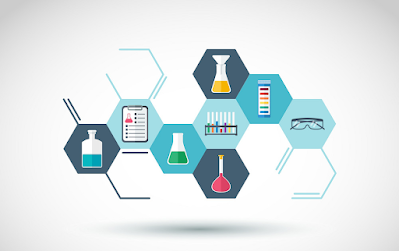What is Laboratory Glassware?
Laboratory glassware refers to a wide range of scientific equipment usually constructed of glass. Glass is used in chemistry, biology, and analytical laboratories because it can be blown, bent, cut, and molded into many sizes and shapes. Many laboratories have training programs to teach new users how to use Laboratory glassware and warn them about the dangers of doing so.
 |
| Laboratory Glassware manufacturers |
Essential Laboratory Glassware
Conical Flask: Emil Erlenmeyer, a German scientist, designed the conical flask, also known as an Erlenmeyer flask, in 1860. It's a form of laboratory glass with a conical body, flat bottom, and cylindrical neck. Because of the flask's sloping sides and tiny neck, the contents may be spun without spilling, making it ideal for titrations by placing it beneath the burette and adding solvent and indicator in the Erlenmeyer flask.
Beaker: The beaker is a flat-bottomed cylindrical glass container. There's also a little spout for easy pouring. Beakers are available in a range of sizes, ranging from milliliters to liters. A beaker differs from a flask in that its sides are straight rather than slanted. The Philips beaker, which has a slightly conical side, is an exception to this rule.
Centrifuge Tube: During centrifugation, liquids are retained in centrifuge tubes, and the sample is separated into its constituents by quickly rotating it around a fixed axis. The conical bottoms of most centrifuge tubes gather any solid or heavy elements of the sample is centrifuged.
Burette: A burette is a graduated glass tube with a tap on one end for dispensing known volumes of liquid in titrations. It consists of a tapered capillary tube with a stopcock at the bottom and a graded glass tube at the outflow of the stopcock. The stopcock valve controls the liquid flow from the tube to the burette tip.
Test Tube: The most common laboratory glassware is a test tube, often known as a sample tube or a culture tube. It's a one-end-open finger-length glass tube. Because of its heat resistance, Glass is often employed in test tubes for general chemical activities. Expansion-resistant glasses, such as borosilicate glass or fused quartz can withstand temperatures of over 400°C. Chemistry tubes are available in various lengths and widths, with widths ranging from 10 to 20 mm and sizes ranging from 50 to 200 mm. The top of the container often has a flared lip to aid in the pouring of the contents.
Due to the constantly expanding demand for Lab Equipment for molecule purification and separation and burgeoning biotechnology research, the global laboratory glassware market is expected to grow dramatically. The demand for laboratory glassware is increasing as the need for chemical research develops. Due to rising demand from the industrial sector and better environmental monitoring, laboratory glassware manufacturers in India are rapidly expanding.
Comments
Post a Comment